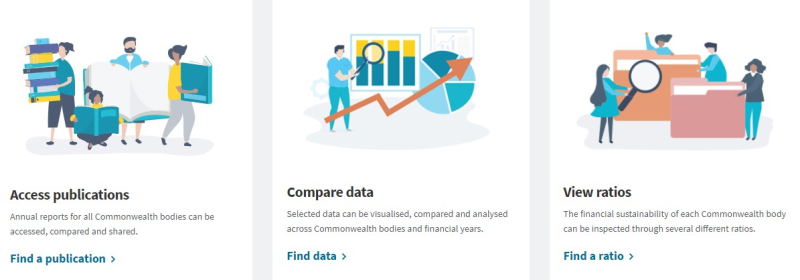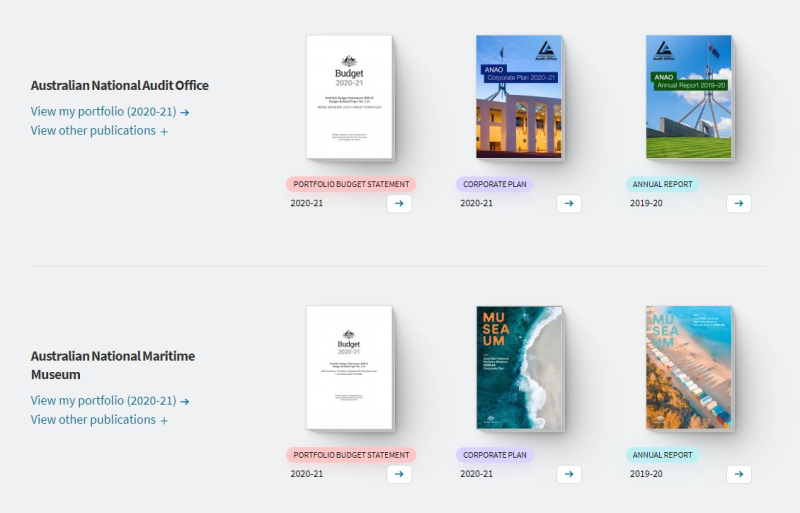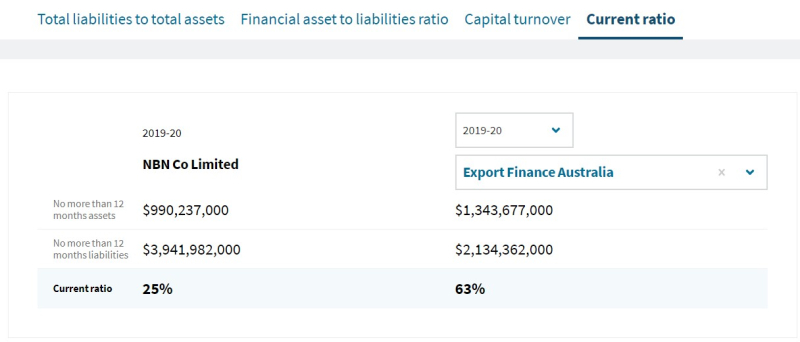
Posted by Gemma Preston[1]
A new online platform known as transparency.gov.au has greatly improved access to government data in Australia. The tool, developed by the Australian Department of Finance, aims to provides a one-stop-shop for planning and performance information for all Australian government entities at the central level, including public financial and non-financial corporations. The Portal, which has been piloted since 2017-18, aims to become the single definitive source of corporate information, providing easy access to the Parliament and the public.
The Transparency Portal has three key features: 1. access to publications, 2. comparison of data, and 3. availability of key financial sustainability ratios (see below).
More than just a dumping ground for government reports, the tool will allow users to more easily understand and compare information about agency resourcing and performance.
The tool enhances the accessibility of information by having everything neatly and logically organized in one place. It also provides a clear picture of the resources allocated in the budget, links these resources to performance targets set out in corporate plans, and connects this information to actual results reported in annual performance statements (see below).
The Portal also has integrated analytical features, allowing users to instantly generate charts and tables to compare resourcing, staffing and remuneration across government agencies. It calculates key financial sustainability ratios and allows comparisons across agencies (examples below).
The launch of the Portal is not only about transparent and accountable government, but also about public service modernization and efficiency.
Enhancing transparency is a perennial journey that requires continued evaluation of tools, systems and processes, recognizing that digital platforms can enhance the mode and efficiency of government operations.
The Portal has been described by Ministers as the “beginning of the full digitization of the government’s annual plans and reports” and there is a growing appetite to see the end of hard copy, printed reports which are costly to produce and distribute. While key government planning and performance reporting documents have been available online for some time, there has been no central, consistent and targeted repository of information. Accessing information has required navigation and knowledge of where to look.
Rather than a big bang approach, the Portal was launched initially as a pilot project, focusing on a sub-set of entities and reports:
- Throughout 2018, the Department of Finance led a pilot Digital Annual Report Project beginning with reports for 14 departments and agencies as well as some corporate plans and portfolio budget statements – “for demonstration purposes only”.
- Following the success of this pilot, all federal agencies were expected to put their annual reports on the portal for the 2018-19 reporting period (i.e., October 2019) creating a comparable data set.
- Overtime the Transparency Portal has been expanded to incorporate additional information, such as corporate plans and portfolio budget statements.
- Legislative changes to Australia’s PFM rules—the Public Governance, Performance and Accountability Rule 2014—has reinforced the reform, requiring all Commonwealth bodies to publish annual reports on the Portal once they are tabled in the Parliament.
The Transparency Portal will promote further information sharing via common platforms (Twitter, Facebook, or LinkedIn) or email. Sharing content from the Transparency Portal can be done via a unique link to the website—making the Portal verifiable as the source of information.
This tool is a complement to several other transparency tools. Data.gov.au is the central source of Australian open government data. AusTender provides centralized publication of Australian government business opportunities, annual procurement plans and contracts awarded. GrantConnect provides centralized publication of current and projected Australian government grant opportunities and grants awarded.
Further reading and information
https://www.financeminister.gov.au/media-release/2019/03/13/launch-government-transparency-website
https://www.transparency.gov.au/about
https://www.transparency.gov.au/publications
[1] Technical Assistance Advisor, Fiscal Affairs Department, IMF.
Note: The posts on the IMF PFM Blog should not be reported as representing the views of the IMF. The views expressed are those of the authors and do not necessarily represent those of the IMF or IMF policy.








